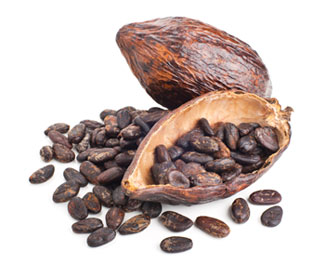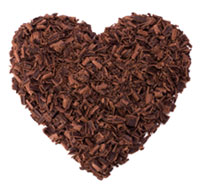Wheat & gluten free chocolate
August 15, 1502 - On his fourth voyage to the New World, Christopher Columbus became the first European to encounter cocoa beans. Off the coast of what is now Honduras he came across a large dugout canoe heavily loaded with local goods for trading, including cocoa beans. 
Stories deviate at this point, some say that Columbus was given the cocoa beans as a gift, and others say that he seized the entire vessel and its goods. Ignoring how he actually got his hands on the cocoa beans, he brought them back to Europe where they initally didn't get much attention.
Twenty years later Spanish conquistador Hernando Cortez is said to have brought back more cacao beans. This time the beans were recognized as one of the prized treasures among the many things stolen from the conquered Aztecs.
Fast forward to the 21st Century and our love affair with chocolate continues. Dark, milk, white, salted, spicy, raw, we love it all. It's good for the soul, raises spirits, and puts smiles on sad faces. And let's not forget the pandemic—chocolate sales surged; some people chose to drink more, and those of us who'd rather spend their calories on chocolate indulged like the end of the world was coming... well I certainly did!
 Scientists also say that dark chocolate (in moderation) is good for the heart. It's also been reported that people who eat lots of of chocolate may be smarter, Does chocolate make you clever? by Charlotte Pritchard BBC News.
Scientists also say that dark chocolate (in moderation) is good for the heart. It's also been reported that people who eat lots of of chocolate may be smarter, Does chocolate make you clever? by Charlotte Pritchard BBC News.
There are also other alleged health benefits including a powerful source of antioxidants—flavanols; may lower blood pressure; may raise HDL and lower LDL cholesterol; may reduce heart disease.
The biggest thing to be aware of is that the majority of chocolate will either contain, or have traces of, wheat due to shared manufacturing processes. Therefore, it's vitally important to always check the ingredients and allergens listed on packaging. Sourcing chocolate that clearly states it is certified gluten free is the safest option, and I speak from some horrible experiences with non-certified chocolate.
There are other pitfalls to watch for, for example, items that say 'no gluten containing ingredients' is absolutely not the same as gluten free. There may still be the potential for cross-contamination in the manufacturing process even if the actual ingredients don't contain gluten/wheat, so check the ingredients and allergens information on the wrapper. Any chocolate that just says 'check the manufacturers website for nutrition information' and doesn't provide ingredients or allergen info on the wrapper at all... walk away.
Recent investigations into lead and cadmium levels in dark chocolate may have caused chocolate lovers everywhere to gasp in horror. However, it's worth reading the reports and putting the findings into context when compared against pretty much everything else we eat. Here's the recent reports, it's up to you to make up your mind; to me it was never negotiable... stop eating dark chocolate? Nope! Not happening! Never!
- Consumer Reports, Dec 15, 2022: Lead and Cadmium Could Be in Your Dark Chocolate
- TIME, Dec 22, 2022: Dark Chocolate Isn't the Only Food With Heavy Metals. Here's How to Protect Yourself
- BBC, Dec 30, 2022: Hershey sued in US over metal in dark chocolate claim
- CBC, Feb 13, 2023: A test of dark chocolate found traces of lead and cadmium. Do you need to give it up?
So, bearing in mind the above, indulging in some good quality wheat free or gluten free chocolate can still be easy to justify... it's a health food.
Important:
Manufacturers change their recipes without warning. Always look for gluten free confirmation or check ingredients carefully before eating.
